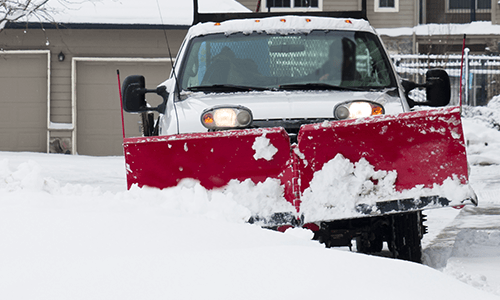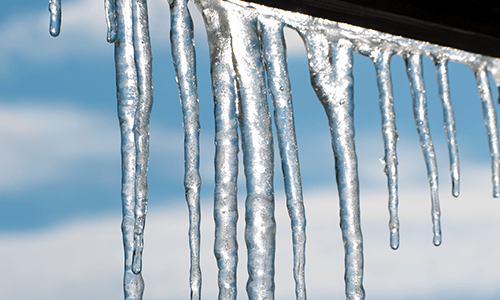For community associations that maintain their own streets, exterior parking lots and sidewalks, snow removal services can easily be one of the highest budgeted expenses each year. In the real estate boom of the early 2000’s, buyers purchased homes without knowing that maintenance of the streets and sidewalks (including snow removal) would be the responsibility of the association. Developers arranged for low cost services to keep the assessments down, and after they left the community, the shock of snow removal expenses left many associations using reserve funds or passing special assessments to cover the bills. Now, professional community managers and experienced board members plan well in advance for snow management expenses. With snow removal season recently behind us, and budget season quickly approaching, late spring is an ideal time for an association’s manager and board to look back at last season’s snow plowing service and expenses, and discuss alternatives for next winter.
While there really is no avoiding snow removal in the Chicago-area (other than moving to a warmer climate!) there are two primary contract/billing options for professional snow management services: per occurrence fees and seasonal fees. In general, a per occurrence contract allows a fee to be charged each time service is provided, and a seasonal flat rate contract establishes a monthly fee during the snow season, regardless of services rendered. When reviewing contracts for snow management services, one needs to look closely at the fine print. Per occurrence contracts generally have different fees levels based on the depth of snow to be plowed, and seasonal fee contracts usually establish a seasonal cap, after which a fee per occurrence is charged. Ice melt may or may not be included in the base price, so that’s another factor to consider. Weighing the pros and cons of each contract type can help a manager and board decide which option is best for their association.
Point: It’s easier to budget accurately for snow management expenses with a flat seasonal rate, the likelihood of a deficit (or surplus) to resolve at the end of the year is very slim, which makes the board of directors and management look good.
Counterpoint: By looking at several years of snow removal expenses for associations with per occurrence contracts and finding the average it’s really not that difficult to prepare a reasonably accurate budget figure. It just takes a little more effort.
Point: By paying a flat rate, the board is saving the association money in years with higher than average snowfall. Associations that pay per occurrence spend much more money in these years.
Counterpoint: By paying a flat rate, the board is throwing away money in years with less than average snowfall. Associations that pay per occurrence spend much less money in these years.
Point: Flat rate contracts result in poor snow plowing services and response time because the contractor has less incentive to service the property when they aren’t billing for each visit. Per occurrence providers service the property quickly and efficiently in order to get to the next client and complete another service.
Counterpoint: Flat rate providers are better staffed because they have more reliable income, this results in servicing properties quickly. Eager to make money, per occurrence providers might service the property when snowfall doesn’t quite meet the depth that triggers service, which results in billing disputes and arguments over snow measurements.
Point: Service providers who offer flat rate contracts make more money from their clients because they are collecting a high monthly fee even during months with minimal (or no) snow removal provided. They should refund that money to associations.
Counterpoint: While there are seasons when flat rate providers come out ahead due to light snow, there are certainly seasons when they barely break even. Service providers are in business to provide a service, but also to make a profit, a fact often forgotten by associations.
Point: Only suburban communities have flat rate contracts and downtown properties have per occurrence agreements.
Counterpoint: Properties with streets, driveways and large parking lots are more likely to choose a flat rate option. These types of properties are more prevalent in the suburbs than urban areas.
So, what’s the best option for your association? The best option is to choose one type of service agreement and stick with it. In a season with average snowfall, either type of service agreement should be adequate. If you are budgeting for a per occurrence agreement, look at several years of actual expenses to find an average. Don’t double the budgeted amount after one year of heavy snowfall. If you’re working with a flat rate contract, understand that some years the expense will be a good investment and some years it won’t. Don’t change to a “per occurrence” after one year with light snow removal. While it’s frustrating to spend money and not receive a service, look at the figures from years past when services received exceeded the expense. Continuous flip-flopping between flat rate and per occurrence service agreements won’t pay off in the long run. Mother Nature is unpredictable, which makes budgeting for weather-related maintenance services difficult. But by accepting the unpredictability that some winters will be mild, some will be normal, and some will be brutal, boards and managers can do their best to plan for the future without seeing it through a crystal ball.




 Rachel Kegley
Rachel Kegley 
 CAI - Illinois Chapter
CAI - Illinois Chapter 


